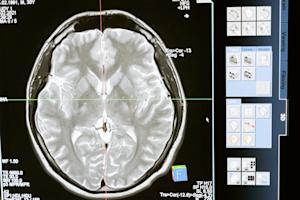Simple Network Management Protocol (SNMP) is a widely adopted protocol that plays a crucial role in monitoring, managing, and securing network devices. It allows network administrators to collect information, configure devices, and respond to network events remotely, making it an essential tool for maintaining network performance and security. In this article, we’ll explore what SNMP is, how it works, its key components, and how it enhances network management, particularly in the context of remote work environments.
Simple Network Management Protocol (SNMP)
SNMP Protocol Meaning
Simple Network Management Protocol (SNMP) is a widely used protocol designed for monitoring and managing devices on IP networks. It facilitates the exchange of management information between network devices, such as routers, switches, servers, workstations, and printers, ensuring that these devices operate efficiently and remain secure.
SNMP works by using a structured set of messages and commands to query and update the status of networked devices. These messages allow an SNMP manager (typically a centralized system) to gather data from SNMP agents, which are software components installed on the devices being monitored. Each SNMP-enabled device maintains a Management Information Base (MIB), a virtual database containing details about its configuration, performance, and operational status.
Through the interaction between SNMP managers and agents, network administrators can monitor device health, track network traffic, and respond to issues, such as device failures or performance bottlenecks. This helps maintain optimal network performance, minimize downtime, and enhance security by identifying vulnerabilities or abnormal behavior.
What is SNMP Used For?
Monitoring and managing network devices: SNMP is primarily used to monitor and control routers, switches, printers, and other connected devices. It helps IT teams retrieve real-time status and performance data across the network.
Performance monitoring: By collecting metrics such as bandwidth usage, CPU load, and memory consumption, SNMP enables IT teams to track device performance and identify bottlenecks before they become critical.
Operational continuity: SNMP helps ensure systems remain online and functional by providing alerts for device failures, outages, or performance degradation. This allows for quicker troubleshooting and reduced downtime.
Device security: SNMP can be used to detect unauthorized access or configuration changes on network devices. With proper configuration, it plays a role in maintaining secure and compliant network operations.
How Does Simple Network Management Protocol (SNMP) Work?
SNMP operates using a client-server architecture where SNMP managers communicate with SNMP agents installed on devices. These agents gather data, store it in a Management Information Base (MIB), and respond to manager queries. The SNMP manager can request data, receive alerts, and perform actions like updating device configurations, ensuring network performance is monitored and managed proactively.
Key Features of SNMP
Device monitoring: SNMP continuously collects data from routers, switches, printers, and other network devices. This allows IT teams to track performance and detect issues in real time.
Automated alerts (traps): SNMP agents can send unsolicited messages, called traps, to alert administrators of predefined events such as device failures or security breaches.
Centralized management: Using SNMP managers, organizations can monitor and control a wide range of devices from a single dashboard, improving visibility and efficiency.
Polling and data retrieval: SNMP supports polling, allowing managers to query devices for specific data like CPU load, bandwidth usage, or error rates at scheduled intervals.
Scalability: SNMP works across small and large networks, making it suitable for both small businesses and enterprises with thousands of connected devices.
Support for multiple versions: SNMP is available in three main versions (v1, v2, and v3), each offering varying levels of performance and security, allowing flexibility based on your environment.
What are the versions of SNMP?
SNMPv1: The original version of SNMP, SNMPv1 offers basic features like device monitoring and management. However, it lacks strong security and uses plaintext community strings for authentication.
SNMPv2: SNMPv2 introduced performance improvements and bulk data transfers. While it added some enhancements over v1, it still falls short on security, continuing to rely on community strings.
SNMPv3: SNMPv3 is the most secure version, offering authentication, encryption, and access control. It is the recommended version for environments where data security and integrity are critical.
Basic Commands of SNMP
GET – Retrieves specific data from a managed device.
SET – Modifies the value of a parameter on a device.
GETNEXT – Retrieves the next data item in the Management Information Base (MIB).
GETBULK – Efficiently retrieves large blocks of data (available in SNMPv2 and v3).
TRAP – Sends an alert from a device to the SNMP manager without being requested.
INFORM – Similar to TRAP but includes confirmation of receipt from the SNMP manager.
RESPONSE – Returns data or confirmation in reply to a GET or SET request.
Key Components of SNMP
SNMP relies on several core components that work together to facilitate the monitoring and management of network devices. Each component has a specific role in the SNMP architecture, ensuring efficient communication and data exchange. Here’s a breakdown of these key components:
SNMP Manager
The SNMP manager, also known as the network management system (NMS), is the central part of the SNMP setup. It is responsible for communicating with SNMP agents, collecting data, and managing network devices. The manager sends requests to agents to gather information or set configurations and receives responses or alerts (known as traps) when certain events occur. It acts as the command center, overseeing the health and performance of all connected devices within the network.
SNMP Agent
An SNMP agent is software running on network devices (such as routers, switches, servers, or printers) that collects device-specific data and stores it in the Management Information Base (MIB). The agent responds to queries from the SNMP manager, providing the requested information. It also sends notifications to the manager if predefined events (e.g., device failures, changes in configuration, or traffic thresholds) occur. Essentially, the agent acts as the bridge between the device and the SNMP manager, making it possible for the network management system to access real-time data.
Management Information Base (MIB)
The MIB is a virtual database used by SNMP agents to store information about the configuration, performance, and operational status of network devices. It contains a structured collection of data objects, each with a unique identifier known as an Object Identifier (OID). These OIDs allow the SNMP manager to locate and access specific data points within the MIB when querying an agent. The MIB ensures that all devices use a consistent format for information, making it easier for the SNMP manager to interpret and manage data from various network devices.
SNMP Traps
SNMP traps are alert messages sent from SNMP agents to the SNMP manager to notify it of significant events or changes in the network. Unlike typical queries where the manager initiates communication, traps are agent-initiated, allowing the manager to receive immediate updates on issues such as device failures, excessive traffic, or configuration changes. Traps help network administrators respond quickly to incidents, improving network stability and security.
SNMP Polling
Polling is the process where the SNMP manager periodically queries SNMP agents for data. The manager sends specific requests to the agent to check the status, performance, and configuration of network devices. The information collected through polling allows the manager to create comprehensive reports and identify any trends or issues that may need attention. This regular data collection ensures proactive monitoring and management of the network.
Typical SNMP Communication
SNMP communication involves a straightforward process that allows efficient monitoring and management of network devices. Here’s a concise overview:
Polling and Data Collection - The SNMP manager periodically sends GetRequest messages to SNMP agents, querying specific data from their MIB (e.g., CPU usage, memory status). The agent responds with the requested information.
Real-Time Alerts (Traps) - Agents send trap messages to the manager when predefined events occur (e.g., device failures or threshold breaches), providing immediate alerts for quick response.
Data Reporting - The manager aggregates data from agents, storing it centrally for analysis and reporting, enabling proactive network management.
Configuration via Set Requests - The SNMP manager can send SetRequest messages to modify device settings remotely, enhancing flexibility and control over network configurations.
Acknowledgment and Error Handling - Each message exchange includes acknowledgment, ensuring successful data transfer. Errors are reported to help the manager take corrective action.
This simplified flow ensures continuous monitoring, quick issue response, and efficient device management.
Pros and Cons of Using SNMP for Network Management
Pros of Using SNMP
Simplified network management: SNMP provides a standardized method for monitoring and managing various network devices, making it easier to oversee device status, performance, and configurations from a centralized interface.
Scalability: SNMP is highly scalable, enabling network administrators to manage both small and large networks efficiently. As the network grows, SNMP adapts, allowing monitoring of many devices.
Automation and proactive monitoring: With SNMP traps and automated polling, administrators can set up automatic alerts for network events, allowing them to address issues before they cause performance problems.
Compatibility across devices: SNMP is widely supported across numerous network devices and manufacturers, ensuring its use in diverse environments without compatibility concerns.
Cons of Using SNMP
Security concerns: Earlier versions like SNMPv1 and SNMPv2c transmit data without encryption, leaving networks vulnerable to interception. While SNMPv3 improves security, it can be more complex to configure.
Complexity in setup and management: Setting up and managing SNMP agents, managers, and MIBs can be challenging, especially for larger networks, requiring specialized knowledge of SNMP functions and architecture.
Resource consumption: Regular polling and data collection can consume network bandwidth and device resources, potentially affecting network performance in large deployments.
Limited insight with basic configurations: SNMP’s basic implementations may not provide deep visibility into network health. For advanced monitoring, additional tools or configurations may be needed.
While SNMP offers network management benefits, security remains a concern, especially with older versions. Splashtop provides secure remote access solutions for remote work environments, integrating well with SNMP monitoring tools. With features like end-to-end encryption and multi-layered security, Splashtop helps ensure that your network and data stay protected while allowing efficient remote access and management.
The Vital Role of SNMP in Enhancing Network Security and Performance for Remote Work
SNMP is essential for maintaining network security and performance, especially in remote work environments where network management needs to be efficient and proactive. Here’s how SNMP enhances security and performance:
Proactive Monitoring: SNMP enables real-time monitoring of network devices, allowing administrators to detect anomalies or potential threats as they arise. This is particularly important in remote work setups where network traffic patterns may fluctuate, and immediate detection of unusual activity is critical for preventing security breaches.
Efficient Troubleshooting and Response: With SNMP traps, administrators receive instant alerts when issues occur, such as device failures or configuration changes. This capability allows IT teams to address problems quickly, ensuring minimal disruption for remote employees and maintaining seamless connectivity.
Centralized Management: SNMP provides a centralized view of the entire network, making it easier for administrators to manage devices spread across multiple locations or remote sites. This is crucial in remote work scenarios, where a consistent and secure network experience must be delivered regardless of device location.
Scalability and Flexibility: As remote workforces grow, SNMP’s scalable architecture supports the management of increasingly complex networks, ensuring that devices are securely monitored and managed no matter how distributed they are.
By leveraging SNMP, businesses can maintain a secure, high-performance network that supports the needs of remote employees, ensuring both productivity and security.
Enhance Your Remote Work Security with Splashtop
For organizations using SNMP to manage their networks, integrating a secure and efficient remote access solution like Splashtop can significantly enhance overall security and performance. Here’s how Splashtop complements SNMP:
Enhanced Security: Splashtop provides end-to-end encryption and multi-factor authentication (MFA), ensuring that only authorized users can access network resources. This helps protect SNMP-monitored devices from unauthorized access, adding an extra layer of security for remote work environments.
Seamless Integration: Splashtop can integrate with SNMP monitoring tools, offering a unified view of network performance and device health. Administrators can easily access and troubleshoot devices remotely, guided by SNMP data and alerts.
Reliable Performance: By using Splashtop alongside SNMP, organizations can ensure that remote devices maintain optimal performance. With its robust remote access capabilities, Splashtop allows IT teams to respond quickly to SNMP alerts, making real-time adjustments to keep the network running smoothly.
Splashtop provides a secure and effective solution for remote access, enhancing your network's resilience and performance while working in tandem with SNMP to safeguard your remote operations.
Learn more about Splashtop’s products and solutions, and sign up for a free trial!





